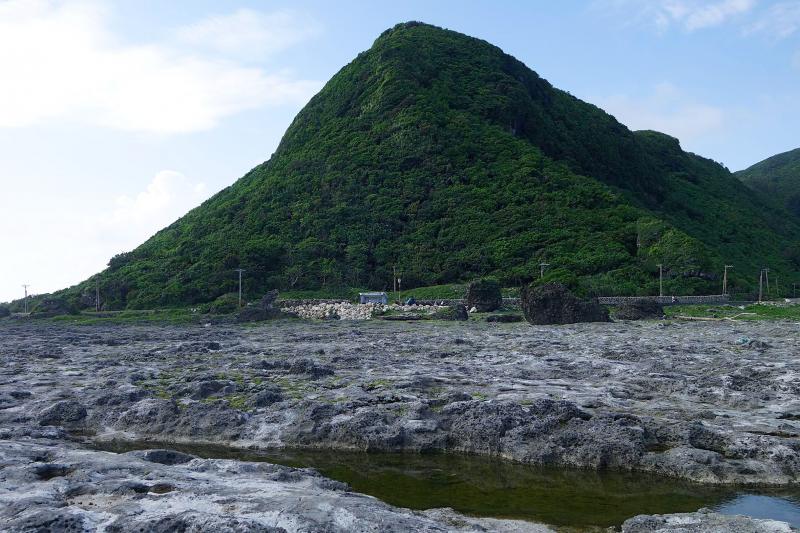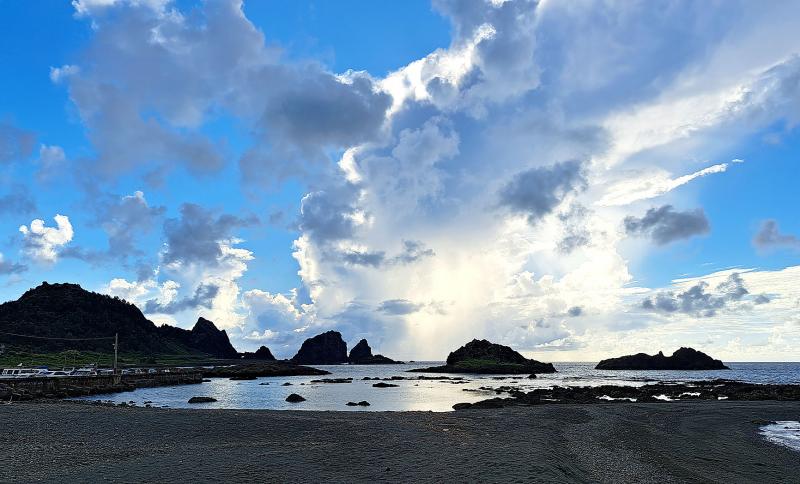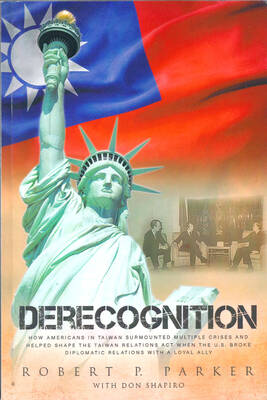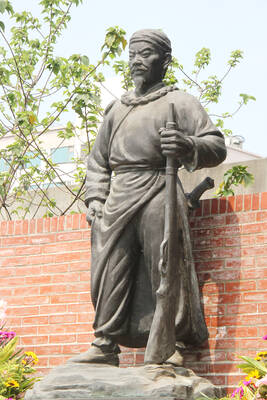Among the Amis people around Chenggong Township (成功) in Taitung County there is a story of a place called Malaulau, ma being a prefix and laulau, meaning “withered.” In fact, that is the old name for Chenggong in Hoklo (more commonly known as Taiwanese): “Malaulau” (麻荖漏) is taken from the Amis word.
What does that name refer to? In Amis oral histories, it is the place where a massive wave struck Chenggong, killing many people. The wave was quite localized and Amis communities to the north have no legends of that event. The east coast south of Yilan has good protection from the effects of tsunamis because the coastal shelf drops off rapidly and deeply, but Chenggong is one of the places a tsunami can reach due to the topography of the ocean bottom there.
TSUNAMIS AND TAIWAN

Photo: Michael Turton
Although the Japanese researchers who first encountered this tale in the late 1930s attributed it to an event in the 19th century, Academia Sinica researcher Masataka Ando, who has studied tsunamis and Taiwan for decades, could not assign it to any particular event in a 2013 paper that numerically simulated different kinds of tsunami-generating events. Ando argued that a 19th century event is unlikely simply because the coast was already populated by Han settlers, yet there is no record of a quake powerful enough to generate such a tsunami.
A more recent work, “The Sedimentological Record of Upper Holocene Tsunami Event in Fengbin, Taiwan,” suggests that Chenggong was hit by the 1771 tsunami that also struck Japan’s Miyako islands, based on affinities between deposits in Hualien County’s Fengbin Township (豐濱) and Miyako.
A later 2017 work, “Investigation of Possible Tsunami Events on the Eastern Coast of Taiwan: Case Studies of Lu-Ye, Changping, and Tulan,” identified evidence of tsunamis hitting elsewhere along the east coast. Evidently the depths off our coast do not defend Taiwan perfectly.

Photo: Michael Turton
Similarly, a 2015 study of coral boulders on Orchid Island (Lanyu, 蘭嶼), “Coral boulders along the coast of the Lanyu Island, offshore southeastern Taiwan, as potential paleotsunami records,” identified several out of place coral boulders that were likely due to tsunamis.
“The largest boulder on the island, at Site 14, has a long axis of 7.5m, and an estimated weight of 234 tons,” the authors write. “The gigantic size of this boulder indicates that it can only be moved by an extremely energetic wave.”
There is a legend on Orchid Island of a mouse that was told to swim to the bottom of the sea and drain the water after water covered the whole island.
The north coast is also vulnerable to tsunamis. An array of studies exploring the chronology of tsunami and super-typhoon deposits in that area has identified at least eight major tsunami events in the last 2,500 years. It seems every couple of hundred years or so a major wave rolls across the area. The most recent one, the 1867 tsunami, is well recorded in both the geological and historical records.
Southern Taiwan as well: in 1781 a tsunami flooded Jiateng Harbor (加藤) and the nearby homes in Pingtung County to a depth of approximately two meters, according to recorded testimony. Simulations show that tsunamis could inundate that area, much of which is below sea level due to subsidence caused by groundwater extraction.
Most of the threats that can trigger tsunamis, from submarine volcanoes to quakes on land and sea, to undersea landslides, exist in Taiwan, along with bonus occasional super-typhoons, so powerful that scientists often cannot tell which is which in the geological record.
There is a giant landslide scar on Turtle Island (龜山島) off Yilan County likely caused a giant wave. Imagine what an eruption or landslide there (the smaller volcano of the pair last erupted in 1785) might do to the Yilan floodplain?
TSUNAMI AND CIVIL DEFENSE DRILLS NECESSARY
Indeed, all of our nuclear plants are in areas that get smacked by tsunamis. If you’ve ever vacationed along the east coast, you’ve probably seen the signs for evacuation routes and shelter sites.
More tsunami drills are necessary, not only for their own sake, but because drills for tsunamis could get around the problem of getting people to do civil defense: present it as natural disaster training. After all, the skills that are needed for handling battle damage and battle casualties have much overlap with those for handling natural disasters.
Civil defense, as well as reserve forces like the territorial militia that some observers advocate, force citizens to experience in their bodies the idea of war. Many people do not want to face that. The reader might object that Taiwan’s four-month conscription already does that, but for many males, it is a gigantic waste of time. They do not acquire any of the skills, experiences and fears that they need.
Taiwan already has an annual National Disaster Day on Sept. 21. Usually a drill is held, but it is quite perfunctory. No techniques are taught, no management experience gained, no lessons learned. On that day in 2020, Tainan held an earthquake drill, a good start.
In the wake of the visit of US House Speaker Nancy Pelosi and the Chinese live-fire exercises near Taiwan, nothing could be more appropriate than to turn Sept. 21 into a national day of drills, with a holiday focused on learning practical and useful techniques for coping with disaster, people practicing evacuating to shelters (take a moment: does the reader know where the nearest shelter is? Do you know how to get there if buildings have collapsed and streets are blocked?) and government officials practicing implementing disaster plans. Bring in experts, particularly from Ukraine, to create scenarios and teach locals how to cope.
As the redoubtable T. H. Schee, who has long been involved in civil defense activities, remarked on Twitter, what the Chinese military exercises have highlighted is Taiwan’s woeful lack of civil defense preparedness. The cyber attacks from China highlight how unprepared Taiwan is to function when our infrastructure is saturated with missile attacks.
Ukraine committed to civil and territorial defense forces after Russia annexed pieces of its south. This month China’s temper tantrum has given us a warning. Sept. 21 is a few weeks away. We need to get moving on turning paper ideas into practical accomplishments.
Because when the missiles start falling for real, it will be too late.
Notes from Central Taiwan is a column written by long-term resident Michael Turton, who provides incisive commentary informed by three decades of living in and writing about his adoptive country. The views expressed here are his own.

One of the biggest sore spots in Taiwan’s historical friendship with the US came in 1979 when US president Jimmy Carter broke off formal diplomatic relations with Taiwan’s Republic of China (ROC) government so that the US could establish relations with the People’s Republic of China (PRC). Taiwan’s derecognition came purely at China’s insistence, and the US took the deal. Retired American diplomat John Tkacik, who for almost decade surrounding that schism, from 1974 to 1982, worked in embassies in Taipei and Beijing and at the Taiwan Desk in Washington DC, recently argued in the Taipei Times that “President Carter’s derecognition

This year will go down in the history books. Taiwan faces enormous turmoil and uncertainty in the coming months. Which political parties are in a good position to handle big changes? All of the main parties are beset with challenges. Taking stock, this column examined the Taiwan People’s Party (TPP) (“Huang Kuo-chang’s choking the life out of the TPP,” May 28, page 12), the Democratic Progressive Party (DPP) (“Challenges amid choppy waters for the DPP,” June 14, page 12) and the Chinese Nationalist Party (KMT) (“KMT struggles to seize opportunities as ‘interesting times’ loom,” June 20, page 11). Times like these can

JUNE 30 to JULY 6 After being routed by the Japanese in the bloody battle of Baguashan (八卦山), Hsu Hsiang (徐驤) and a handful of surviving Hakka fighters sped toward Tainan. There, he would meet with Liu Yung-fu (劉永福), leader of the Black Flag Army who had assumed control of the resisting Republic of Formosa after its president and vice-president fled to China. Hsu, who had been fighting non-stop for over two months from Taoyuan to Changhua, was reportedly injured and exhausted. As the story goes, Liu advised that Hsu take shelter in China to recover and regroup, but Hsu steadfastly

You can tell a lot about a generation from the contents of their cool box: nowadays the barbecue ice bucket is likely to be filled with hard seltzers, non-alcoholic beers and fluorescent BuzzBallz — a particular favorite among Gen Z. Two decades ago, it was WKD, Bacardi Breezers and the odd Smirnoff Ice bobbing in a puddle of melted ice. And while nostalgia may have brought back some alcopops, the new wave of ready-to-drink (RTD) options look and taste noticeably different. It is not just the drinks that have changed, but drinking habits too, driven in part by more health-conscious consumers and